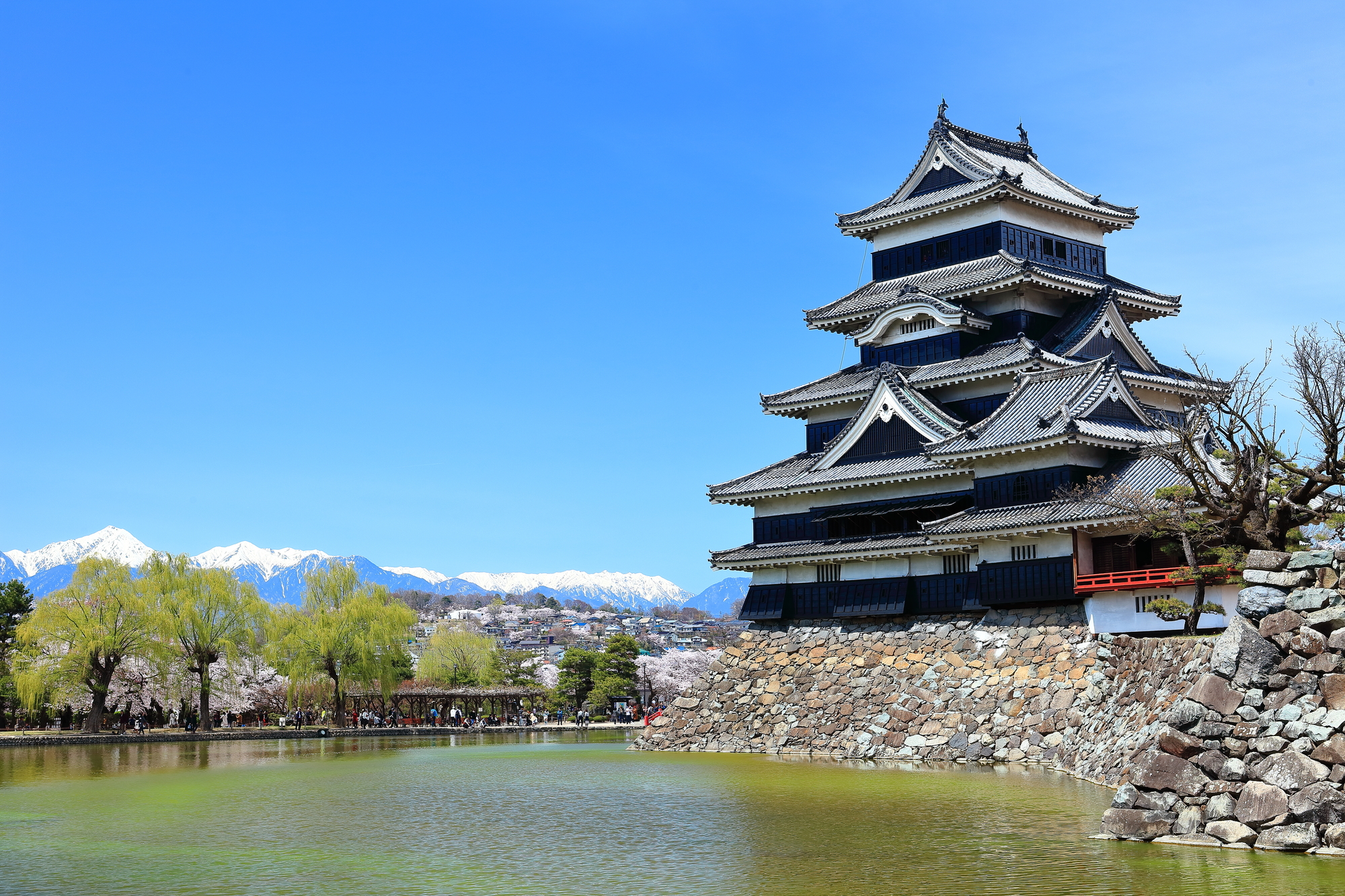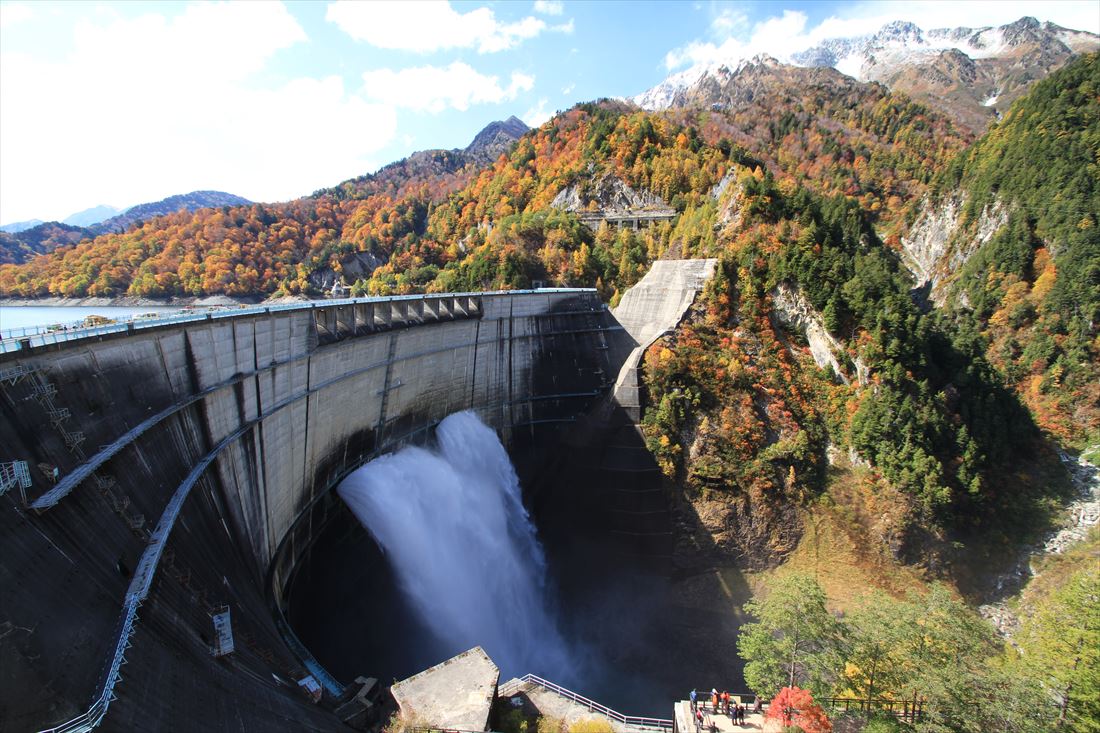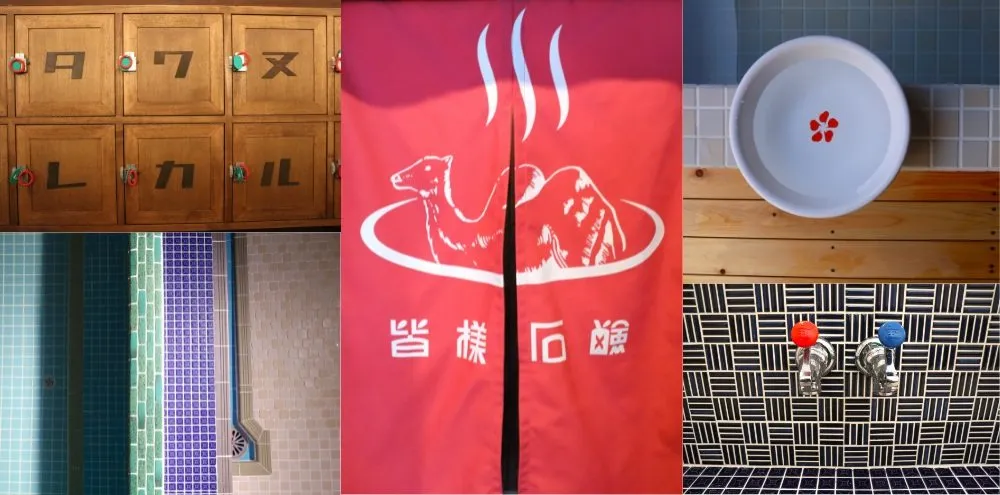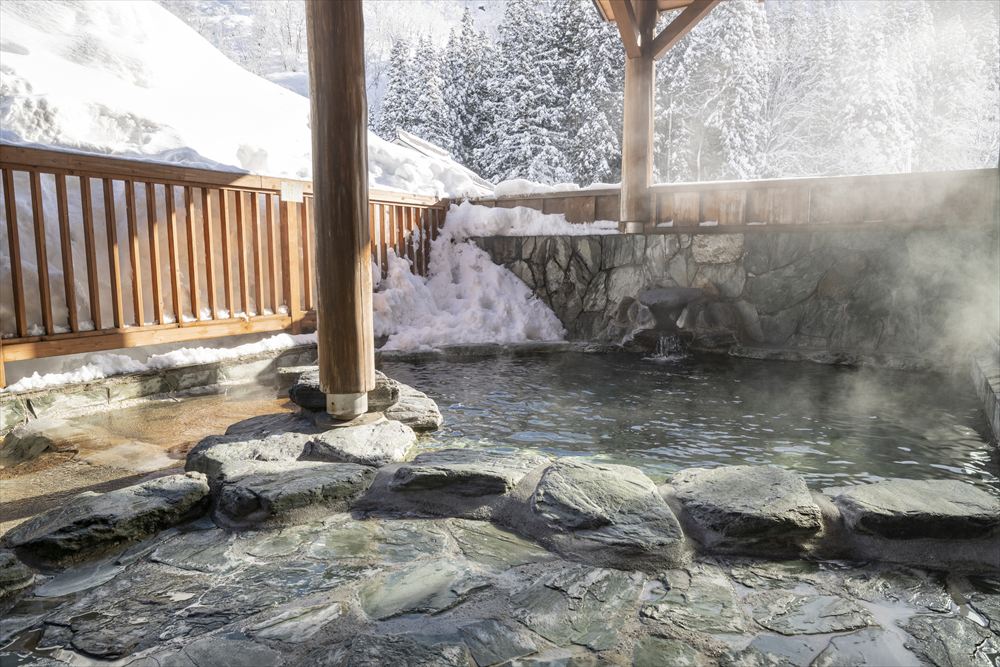Nagano Prefecture is blessed with magnificent mountains and lakes, and excellent hot springs. Still often called “Shinshu,” its old name, Nagano has many historic spots. This time we would like to introduce the northern and eastern part of Nagano Prefecture. Come along, let’s take a trip and enjoy the greatness of the nature found there.
SHINSHU (ATT.JAPAN ISSUE 46)
SHINSHU
 Nagano
Nagano
Nagano City is the gateway to Shinshu. The city hosted the 18th Winter Olympics in 1998 and gained worldwide recognition and fame. Nagano City has long prospered as a temple town because of the Zenko-ji Temple. Also, there are several museums located around the city. Zenko-ji Temple, erected in the center of the city, is not affiliated with any one particular sect of Buddhism, and is revered by all. The number of visitors each year exceeds six million people. The proverb says, “Pulled by a bull, one arrived at Zenko-ji,” which means an unexpected occurrence may bring you a stroke of good fortune. The original story goes that when an old woman was hanging up a cloth on a laundry pole, a bull passed by, taking the cloth away on its horn. The old woman ran after the bull all the way to Zenko-ji without intending to. That incident made her very devoted to Buddhism, and she was able to go to heaven after her death.
The present main building was built in 1707. The entire structure is designated a National Treasure and consists of three parts; the outer, the inner, and the most inner part. Not only the temple precinct, but also the outer hall of the building can be entered free of charge. The standing statue of Amida-Nyorai Buddha, which is the principal image at Zenko-ji Temple, stands on the left side of the main altar in the most inner part. It is a rare case that the three statues including Honda Zenko, the founder of Zenko-ji Temple, with his wife and child are placed on the center of the main altar instead of the principal image. Okaidan Meguri or the “Tour in the Pitch Dark Tunnel” lies under the altar of the temple. This underground corridor runs beneath the main altar where the principal image of the Amida Nyorai Buddha is enshrined. Groping your way through this corridor in total darkness, if you touch the key set just beneath the sacred image, it is said that you can gain enlightenment and enter the Paradise of the Amida Buddha. There is not a light to be seen in the corridor, so please be careful not to lose your belongings.
As the principal image of Zenko-ji Temple is the Hibutsu (“Secret Buddha”) which has not been revealed to the public since 654 AD, visitors cannot pray to the Buddha. However, a ceremonial ritual called “Gokaicho” is held every seven years, with a replica of the image, Maedachi Honzon, offered to the public for viewing and praying. The Gokaicho of 2009 is from April 5 to May 31. During this period, a wooden pillar called “Eko Bashira” is erected in front of the main hall. A string is tied from the pillar extending to the right hand of the image, and when you touch the pillar, you can form a connection with the principal image. This ritual attracts many worshippers regardless of which religious denomination they belong to.
It will be fun to stroll along the Omote-Sando, the front approach to Zenko-ji Temple. You can savor the aroma of steaming hot dishes and buns wafting from both sides of the street. The latter is Nagano’s specialty, “Oyaki” steamed buns, which have various ingredients inside, such as pickled nozawana, or sweet bean past. Oyaki is delicious and very filling. Ask their recommended flavors and try some at the shops. You can also find a famous shop for the popular Japanese condiment, shichimi togarashi (a ground mixture of red pepper and aromatic spices).
On the back street behind the Omote-Sando you can find Tokugyobo, which offers a special program of experiencing Japanese culture. The 6-hour comprehensive program includes a tea ceremony, zen meditation, kimono wearing and Buddhist vegetarian shojin cuisine for 12,500 yen. The head priest of Tokugyobo, wishing foreign people to better understand the Japanese spirit, started this well-reputed program conducted in English, Chinese, and Korean. To participate, you have to make a reservation by one day in advance by e-mail (mail@zenkoji-tokugyoubou.com). Since Tokugyobo is originally a shukubo, lodging facility for pilgrims, you can of course stay there ? for 9,450 yen per night, including experiencing a religious service early in the morning at Zenkoj-ii Temple. Please inquire for further information.
Togakushi
Togakushi is located in the north from the center of Nagano City about an hour’s bus ride away. The area lies at the foot of Mount Togakushi, near the boundary of Niigata and Nagano prefectures, and is famous for the production of soba, or buckwheat noodles. The area name “Togakushi,” meaning “hiding behind the door,” refers to the Japanese myth that Amaterasu Omikami, the sun goddess, was greatly angered about wrongdoing of her brother Susanoo-no-Mikoto, and in protest she shut herself inside the Heavenly Cave and sealed it shut with a giant rock.
First, let’s visit Togakushi Shrine. Chusha, the middle shrine, plays the most important role among its five halls. The three Japanese cedar trees are approximately 900 years old and are designated a Japanese Natural Monument. If time allows, it is a good idea to walk along the cedar avenue behind the front approach to the upper shrine (Okusha). Still remaining in and around the shrine is the atmosphere and natural setting in which yamabushi mountain monks used to practice severe ascetic training.
There are some facilities offering study through actual experience to enjoy in Togakushi. Togakushi Folk Museum, Togakushi-ryu Ninpo (Tricks of Ninja) Museum offer hands-on experience such as throwing Ninja’s knives, and navigating a three-dimensional maze. You can also see Ninja tools on display.
Togakushi is known as one of the soba buckwheat production centers of Japan. There are famous soba noodle restaurants lined along the streets. On top of that, you can experience soba noodle making at Togakushi Soba Museum Tonkururin (closed in winter). The skilled soba instructors teach you how to make the soba noodle. After preparation and boiling, you can enjoy your own handmade soba noodles!
Suzaka / Obuse
Take the Nagano Line from Nagano Station to the Suzaka and Obuse areas.
Let’s stroll along the streets in Suzaka, also known as a town of kura ? a Japanese storehouse with thick, fireproof walls to protect valuable items from theft and natural disasters. Kura is also a symbol of wealth. There were some successful silk manufacturers here during the Meiji period (1868-1912) who built their kura storehouses, some which still remain along the streets of Suzaka today. It is interesting to walk through the narrow and winding old alleys off the main street. There are some museums and exhibitions including Tanaka Honke Museum in which belongings of Tanaka family, wealthy merchants during the Edo Period (1603-1867), are displayed.
Let’s go on to Obuse, a town famous for its chestnuts and Katsushika Hokusai (1760-1849), the preeminent wood block print artist. The best season to visit Obuse may be autumn when many people flock to the town to enjoy eating the seasonal chestnut rice (kuri-okowa). Also, sweets made of local chestnuts are popular for souvenirs. Obuse was a favorite place of Hokusai during the last years of his life. Hokusaikan displays more than 40 of Hokusai’s paintings on scrolls or in frames, as well as his wood block prints / books. The annex of Hokusaikan displays two gorgeous festival floats of Obuse. The ceiling paintings on the floats are painted by Hokusai, very beautiful and valuable.
 Yudanaka Shibu Onsen-kyo
Yudanaka Shibu Onsen-kyo
Yudanaka Station, the last stop on the Nagano Railway, is the entrance to Yudanaka Shibu Onsen-kyo. It’s about one hour by local train from Nagano Station. If you have time, you can walk to three hot spring resorts along the river; Yudanaka, Andai, and Shibu Onsen-kyo. Hotels, restaurants, and souvenir shops are dotted here and there in this typical Japanese hot spring resort. Tourists in yukata, light cotton kimono, stroll through the resort. In Shibu Onsen-kyo, the largest hot spring resort of the three, you can casually enjoy the footbath, or Sotoyu-meguri, the bathhouse tour. Buy a special towel and take it with you to the various bathhouses. If you collect all the stamps prepared at each bath, you will have a chance to receive a special gift.
Take the bus from Yudanaka Station for 15 minutes to Kanbayashi stop, then walk 5 minutes to the starting point of hiking paths leading to Jigokudani Onsen Hot Spring Resort. Jigokudani Yaen Koen is a monkey park famous for its “snow monkeys.” There you can observe and take photos of monkeys eating food, playing, and soaking comfortably in the hot spring bath in winter. It is a good chance to see the cute-faced monkeys at such a close distance. Admission is 500 yen. Please watch your step on the hiking path to the park.
Nozawa
Nozawa has long been a popular traditional hot spring resort. The famous nozawana pickled sweet bean paste originated in this town. You can see local people cooking vegetables or eggs in the sources of hot springs, using geothermal power. The thirteen outside bathhouses in the town welcome tourists free of charge. After staying at a Japanese style hotel, taking a morning bath, you can visit morning markets and buy fresh vegetables there.
Hakuba
The Hakuba, Omachi, and Azumino areas along the JR Oito Line have magnificent panoramic views that are the pride of Japan.
Hakuba is one of the most popular ski resorts, and is known for its excellent powder snow. You can enjoy trekking and viewing the dynamic snow panorama at Hakuba Daisekkei all year around.
The Japanese historical building “Shoya Maruhachi” offers tourists cultural experiences such as introduction to crafts and kaiseki cuisine at the restaurants. The 156-year-old house, which had been owned by a wealthy merchant’s family in the Edo period, was repaired for the exhibition purpose. You can find refined and traditional Japanese culture everywhere ? on the tatami matted floors, timber furnishing, sliding paper doors, and the original hearth in the house.
Omachi
Omachi Onsen-kyo hot spring resort has many tourist attractions such as a trekking path along the Kashima River, and the Sake Museum which has various exhibits about Japanese sake, rice wine. You can enjoy hot springs surrounded by beautiful nature in every season.
The three lakes, Lake Kizaki, Lake Nakatsuna, and Lake Aoki are located in the northern part of Omachi, and are also called Nishina Three Lakes. During the spring and summer, the lakes’ surroundings are very beautiful with lush greenery and comfortable breezes. Lake Aoki, also known as “the Thinker’s Lake” is an ideal lake for taking a walk around the circumference. The crystal clear lake is a good fishing spot, and Lake Nakatsuna is also popular with anglers. Lake Kizaki is inhabited by Kizaki Trout, which was once thought to be a very rare fish. The area is also known as the setting of a popular Japanese animation, “Onegai Teacher.” Not a few anime fans come and visit the area for the “pilgrimage” to find the facilities and scenery which actually appeared in the anime.
Azumino
Wasabi horseradish is a must condiment for sushi. The stimulating taste of the wasabi enhances the taste of fish. By the way, do you know how wasabi grows? The Daio Wasabi Farm produces 150 tons of wasabi a year. It is known that wasabi strictly requires pure water for growing. The water in Azumino, which comes from the North Alps, makes it possible to grow wasabi on such a large scale at the Daio Wasabi Farm. Although the fields are covered with black nets to protect the wasabi from the strong sunshine from April to late September, you can enjoy nature just by strolling around the fields. Azumino is also known as the location for the movie “Dreams” directed by Kurosawa Akira (1910-1998). The scene with a watermill is especially famous. Local specialties using wasabi such as wasabi ice cream, wasabi croquettes, and wasabi chocolate and so on are sold. Be sure to try one of these.
In Rokuzan Art Museum, works of Ogiwara Rokuzan (1879-1910), who studied sculpture under Rodin, are collected. The chapel-like structure of the main hall is surrounded by the fresh green foliage of white birches in spring. The building has many skylight windows to take in much sunshine, which casts gentle light on the sculptures of Rokuzan. Azumino has several other museums, which encourage visitors to experience art in the world of nature and not separate from it.
After a walk, take a rest at Hachimen (“Eight Faces”) Daio Footbath. The footbath surrounds a pillar, on which are engraved eight stone masks. Enjoying those artistic faces with different expressions of delight, anger, sorrow and pleasure, visitors can bathe free of charge. This facility is open 24 hours, and is also popular with local residents.
Karuizawa
Karuizawa is one of the oldest and most popular summer resorts in Japan. It has thrived and been recognized as a beautiful summer resort since a Canadian missionary of the Anglican Church, Alexander Croft Shaw (1846 – 1902) built his summer retreat here in the late 19th century after he was attracted by the beauty of nature of the surrounding area. It was at a tennis court in Karuizawa where the then Crown Prince Akihito, the present Emperor, met Miss Shoda Michiko, the future Empress.
Let’s take a walk to Kyu-karuizawa. The center of the area is Kyu-karuizawa Ginza, which developed as a shopping district catering to the needs of residents who stayed at their villas there. The main street is Kyu-karuizawa Ginza Shopping Street where you can find many kinds of shops ranging from venerable old stores to trendy shops including a French Bakery once patronized by John Lennon, another bakery, Boulangerie Asanoya, Mikado Coffee (cafe), and Akaneya Coffee (cafe). It is said that John Lennon stayed at Mampei Hotel and every day he ordered Royal Milk Tea sitting right at the back of its classical cafe. Shaw Memorial Chapel is located nearby in a wooded area, and it is the oldest church in Karuizawa. Old Mikasa Hotel, which opened in 1906, is a Western style wooden structure. Once the hotel was a gathering place for members of the Imperial family, and also for movers and shakers of the political and economic world. After the Mikasa Hotel was closed in 1970, the building was designated an Important Cultural Asset. It is highly recommended that you rent a bicycle, and enjoy cycling along the larch tree lined road to see the Old Mikasa Hotel.
Another charm of Karuizawa is the opportunity to commune with nature, as it is located on a beautiful highland plateau. “Karuizawa Yacho no Mori”, a wild bird sanctuary, is home to a wide variety of wild fauna and flora. Visitors enjoy walking on the 2.4-km trekking path. If you participate in a guided tour called Nature Walking, you can experience and deepen your knowledge of nature in Karuizawa.
Kita-karuizawa on the foot of Mount Asama is an ideal hiking place, with interesting sights along the way, especially Oni Oshidashi (“Demon Extrusion”), which has been selected as one of the three most mysterious spots in the world. The natural art of the peculiar rocks and was created by the lava flow caused by the eruption of Mount Asama in 1783. The bizarrely shaped rocks make you feel that you have wandered into some mysterious other world.
On the south side of Karuizawa Station, you can enjoy golf, tennis and skiing in winter. Karuizawa 72 Golf is a country club which has a variety of courses including the official course used for women’s professional golf championship tourneys, as well as casual family courses. Karuizawa Prince Hotel Ski Area is located in front of Karuizawa Prince Hotel. You can enjoy skiing here if you take a train for just one hour from Tokyo. It also has a snow field for children’s play, so young children and those who came to ski for the first time can have fun, too.
Let’s wrap up this trip to Shinshu by enjoying some shopping. New East Garden Mall opened last year, in November, 2008 at Karuizawa Prince Shopping Plaza at the south exit of Karuizawa Station, and houses many of the world’s top designer brand shops, including three shops which opened for the first time in Japan. There is also the “New West,” “West,” “East” and “New East” cluster of shopping malls and 60 percent of a total of about 210 shops are outlet shops. Exploring and shopping at this large-scale mall is sure to be enjoyable.
Column – Hoshinoya Karuizawa
Hoshinoya Karuizawa was newly opened in 2005, renovated from Hoshino Hot Springs Hotel which was long famous for its excellent waters good for the skin since its opening in 1914. The renovation was based on the vision of an innovative Onsen Ryokan for the new century.
Hoshinoya Karuizawa lies in a calm valley along the Yu-kawa River, a relatively remote area from the outside world. Japanese-style villas, which are wooden but solid with clay-like walls and clapboards, dot the valley and are connected by lanes. The river flows through the middle of the village. Surrounded by water and forests, when you walk around the village you will enjoy eye-pleasing new sights and scenery every time you turn a corner.
Every guest room has a large terrace or a veranda and has a spacious living room equipped with sofas or horigotatsu, or sunken kotatsu. High ceilings and wide windows offer an expansive and comfortable atmosphere where you can enjoy staying all day and not only when you sleep. Each room has an individual approach and entrance, providing a feeling of independence. The number of types of rooms is more than 20, and no two rooms are the same since the combination of the design and location is different. Rooms are not equipped with a TV so as to enable guests to enjoy the great natural beauty of the four seasons in Karuizawa, forgetting the hustle and bustle and constant stimulation of the city. Opening a high window of the bathroom of the guestroom and feeling the breeze while soaking in a bathtub to your heart’s content offers an experience of true relaxation you will never forget. You can enjoy large public baths at Tombo-no-Yu, an open-air bath, and at the “Meditation Bath.”
Since the temperature dips below 20 degrees C in Karuizawa at nighttime even in mid summer, artificial cooling is not necessary thanks to heat insulation and a monitor roof. Comfortable floor heating utilizes earth thermal geo-heat. As about 70 percent of the energy which the system uses is self-supplied, Hoshinoya Karuizawa is an eco-friendly resort.?
Another point to be added is that Hoshinoya Karuiazawa is very flexible in accomodating your schedule, compared to other onsen ryokan. For example, taking the last bullet train of Nagano Shinkansen that starts from Tokyo Station at 10:04 pm, you can check in at 11:30 pm, then take a bath and have a late dinner. Next morning, breakfast as late as 11 am is also available. In addition to Japanese cuisine, you can also enjoy Western cuisine at restaurants in Hoshinoya as well as at select restaurants in Karuizawa, which is proud of its rich dining culture. Your stay will also be pleasing to your palate.
Our guiding concept for the new Hoshinoya Karuizawa has been “cherishing traditional ‘Japaneseness’ while at the same time offering a contemporary ryokan experience.” Come and enjoy “another Japan” here in Karuizawa.
| Access | 【Nagano】1 hour and 50 minutes from Tokyo Station by Nagano Shinkansen / 3 hours from Nagoya Station by express train 【Karuizawa】 1 hour and 20 minutes from Tokyo. It is also convenient to go by way of Tokyo from Nagoya and Osaka. |
_R.webp)






